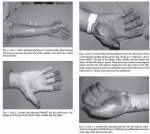INJECTING METHADONE
We can’t stress enough that methadone was made to be taken orally, never injected. It’s not sterile, it has some seriously nasty ingredients for veins and organs, you might end up hanging out, and many users don’t get a rush anyway. This guide is only for those who insist on injecting their methadone, to make sure they can reduce the many risks involved.
Possible health problems
Methadone syrup was never designed for injection. Each millilitre contains 5 mg of methadone hydrochloride, sodium benzoate, ethanol, sorbitol solution, glycerol, caramel and finally, flavour pharmaceutical 503.978/A. These can have the following effects when injected:
Methadone hydrochloride: respiratory depression
Sodium benzoate: Hypersensitivity and allergic reactions. Respiratory reactions have occurred in people susceptible to aspirin-induced asthma.
Ethanol: Central nervous system depression, which can lead to stopping breathing and coma
Sorbitol solution: effects can be similar to a ‘dirty hit’: facial flushing, abdominal pain, nausea, vomiting and sweating. High levels may lead to kidney failure or kidney stones.
Glycerol, caramel and flavour pharmaceutical 503.978/A:
effects unknown.
Some of these ingredients can cause allergic reactions, respiratory reactions, and damage your heart, kidney, veins and liver if injected. Talk to your NSP workers or methadone prescriber about the differences between pure methadone and methadone with additives.
In some cases, methadone is mixed with cordial or fruit juice. Injecting this after it has been in someone’s mouth also means there will be plenty of harmful bacteria entering your bloodstream.
Methadone is not a sterile fluid so blood diseases can arise from injection. A large volume of injected fluid can also cause vein damage, especially if injected quickly. Always go slow and steady.
Injecting methadone will lessen the amount of time it will stay in the body, so withdrawal symptoms will usually come on earlier than usual. Some users state there is no rush from injecting methadone anyway and it is just a needle fixation. In any case, weigh up the high risks of injection carefully against the perceived benefit.





